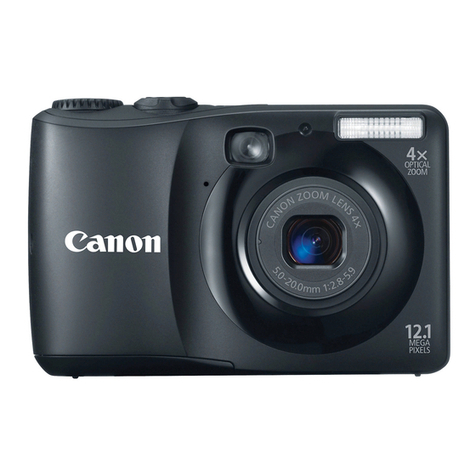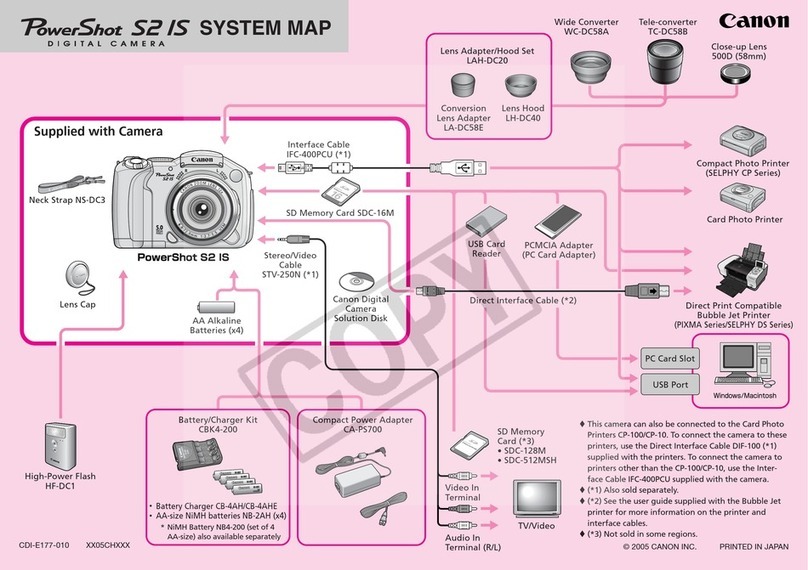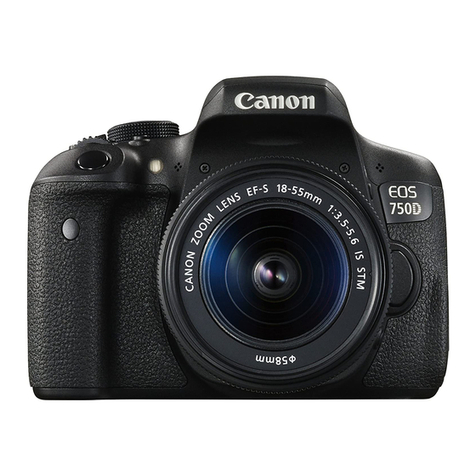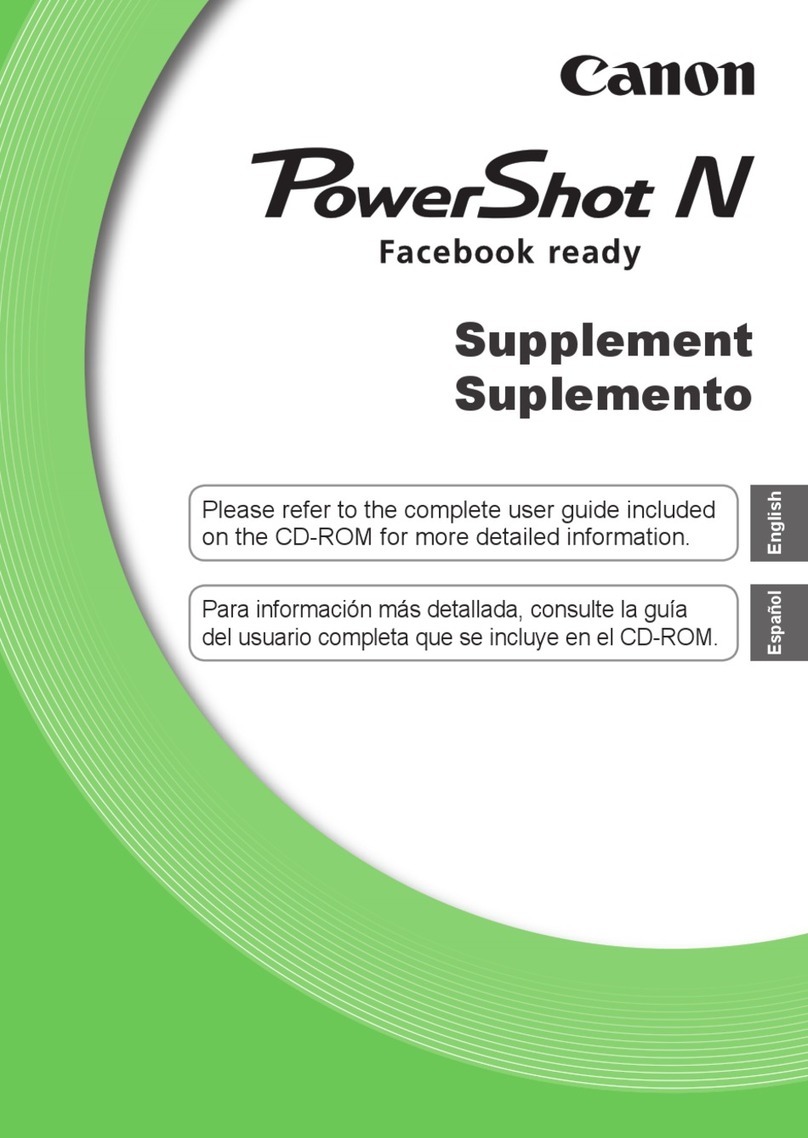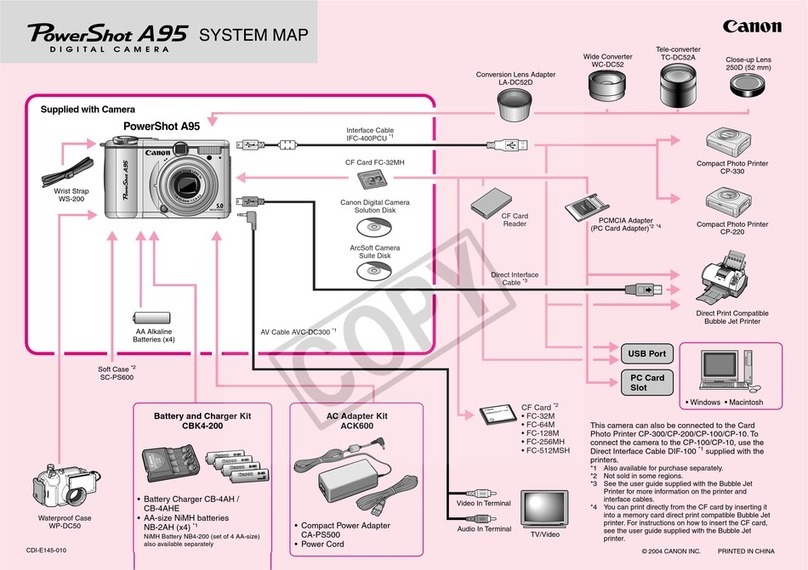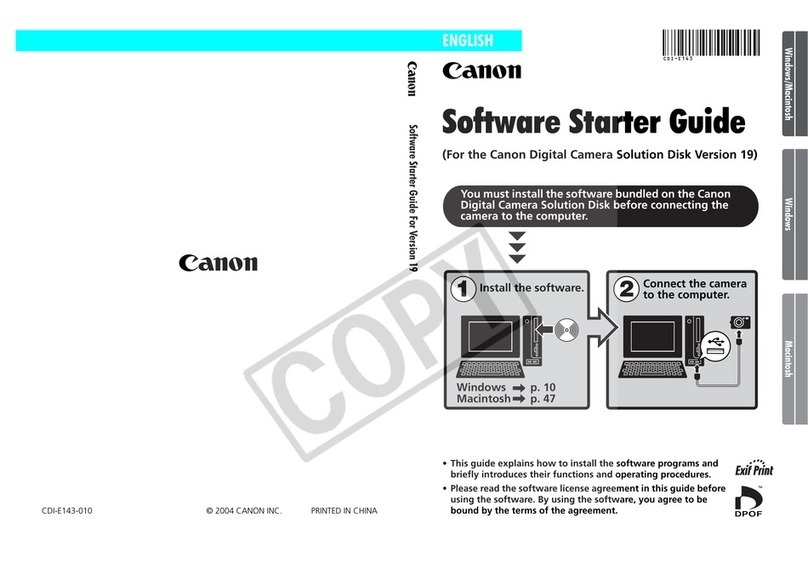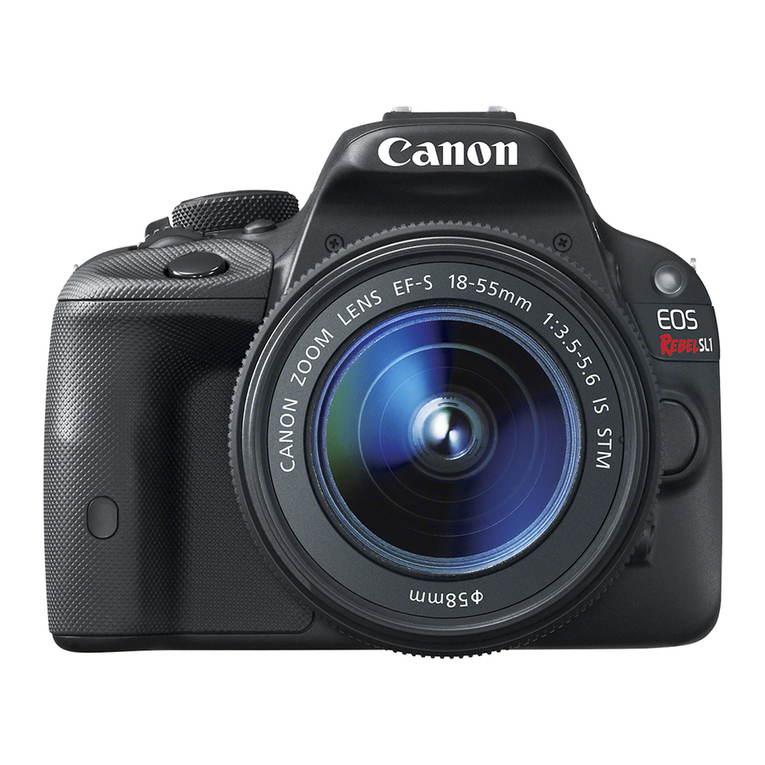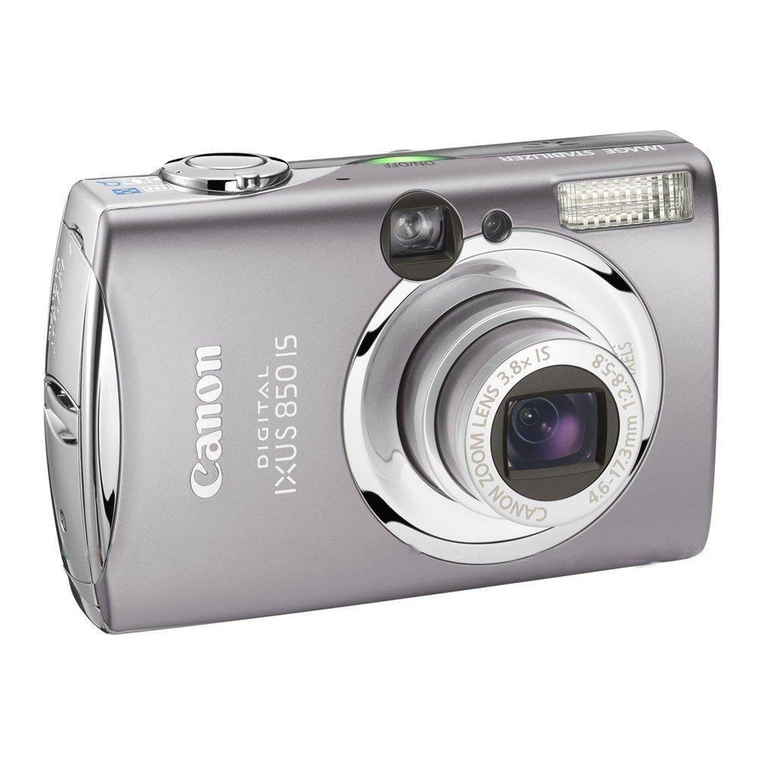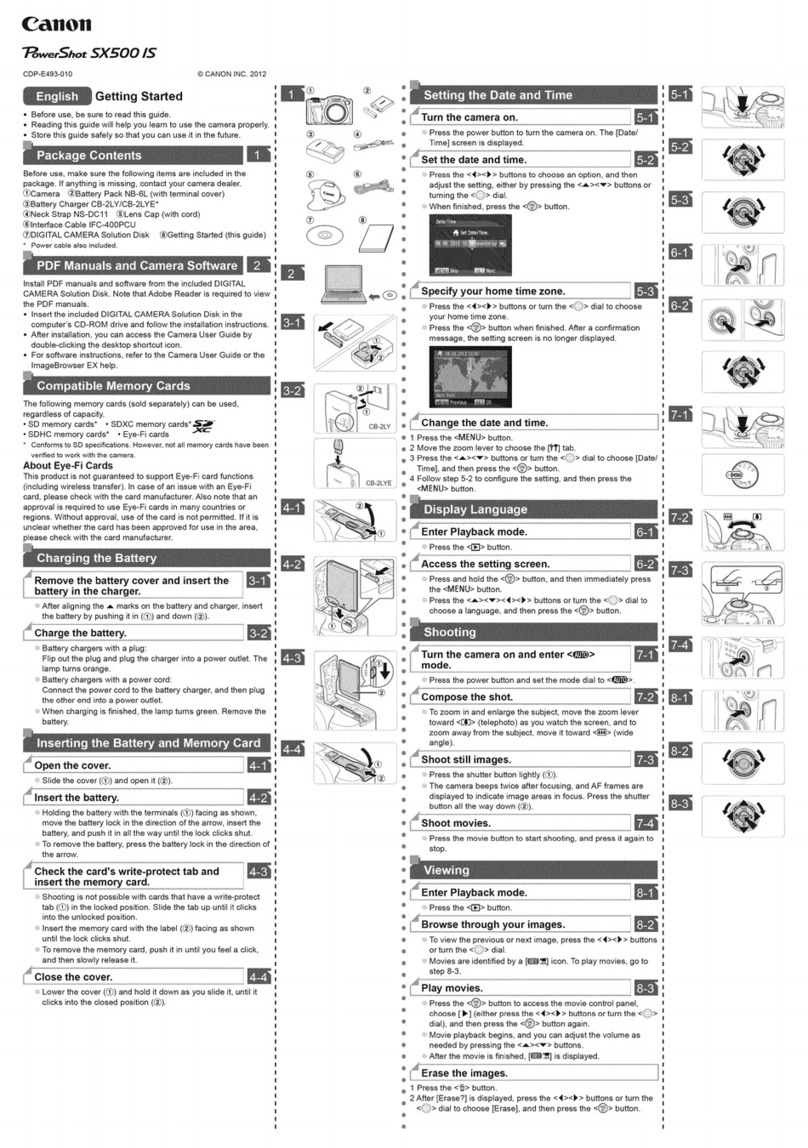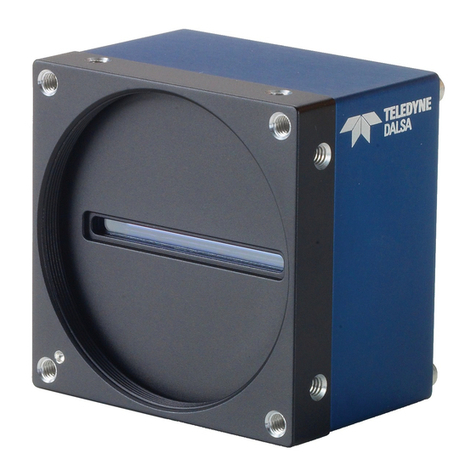
2
AI Servo AF Custom Function &
ISO Speed Settings Guide
AI Servo AF Custom
Functions
ISO Speed Settings
Custom functions for personalized
AI Servo AF settings to capture
moving subjects more effectively
A wide range of normal ISO speeds
(ISO 100 – 12800) and ISO
expansion options (ISO 50, 25600,
51200, 102400) are available
The EOS-1D Mark IV offers photographers a variety of
options to customize AF and Continuous shooting
operation. These can be found in the third Custom
Function group (C.Fn III). Among the Custom Function
options are those that can be set for a variety of subjects
when using AI Servo AF which is the best AF mode for
moving subjects. As introduced on page 4, the Custom
Function settings provide a greater level of versatility for a
wide variety of shooting situations. Depending on the
shooting conditions, it is possible for the AI SERVO AF
mode to focus more accurately on fast moving subjects by
selecting an appropriate Custom Function. This guide
describes the features of these key Custom Functions, and
how to select and use the most appropriate settings.
A major feature of the EOS-1D Mark IV is its outstanding
image quality at high ISO speeds. Image quality
improvements brought about as a result of the newly
developed 16 megapixel CMOS sensor and Dual "DIGIC
4" image processing make it possible to use a maximum
standard ISO speed of 12800, with an ISO expansion of
up to ISO 102400. Until now, images at ISO speeds of
3200 and 6400 were of such a quality that usage was
generally due to the need for an image rather than a
desire to have the best possible image quality. With the
EOS-1D Mark IV, image quality has improved so much that
the normal ISO range up to 12800 is now suitable for a
much greater range of photographic situations. The
second half of this guide introduces the superior image
quality of the EOS-1D Mark IV including use of high ISO
speeds, and offers tips for getting the best results at all
ISO speed settings.

